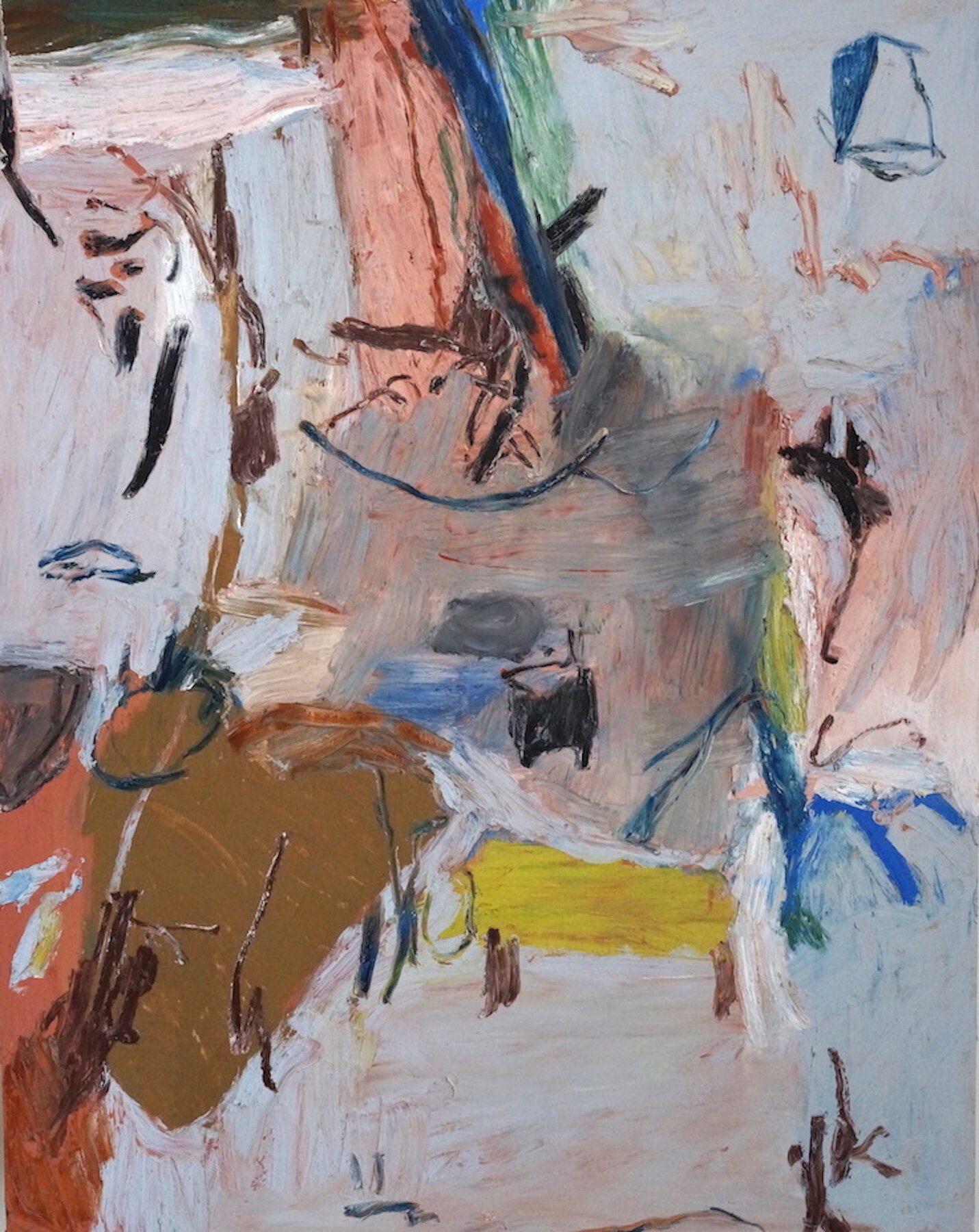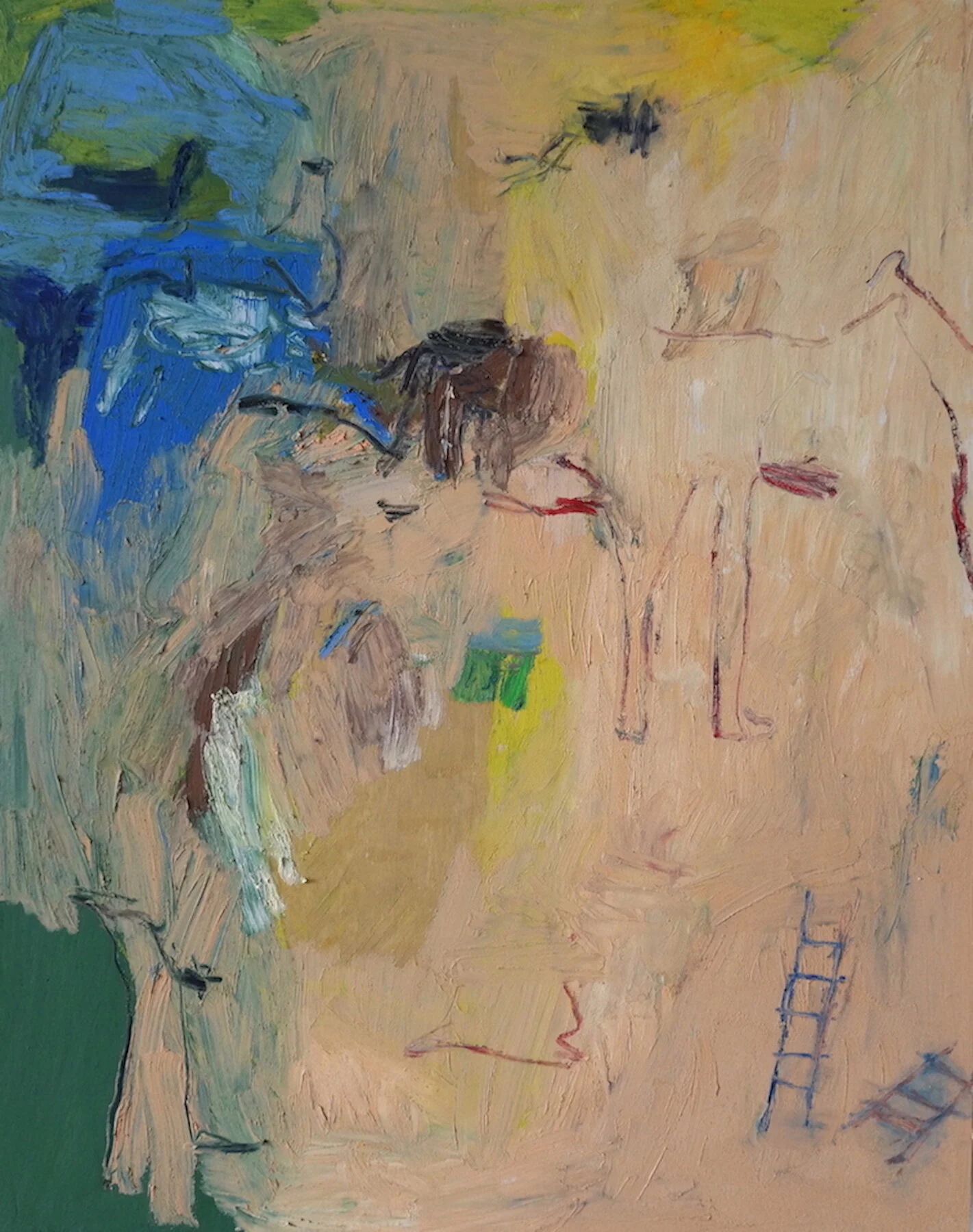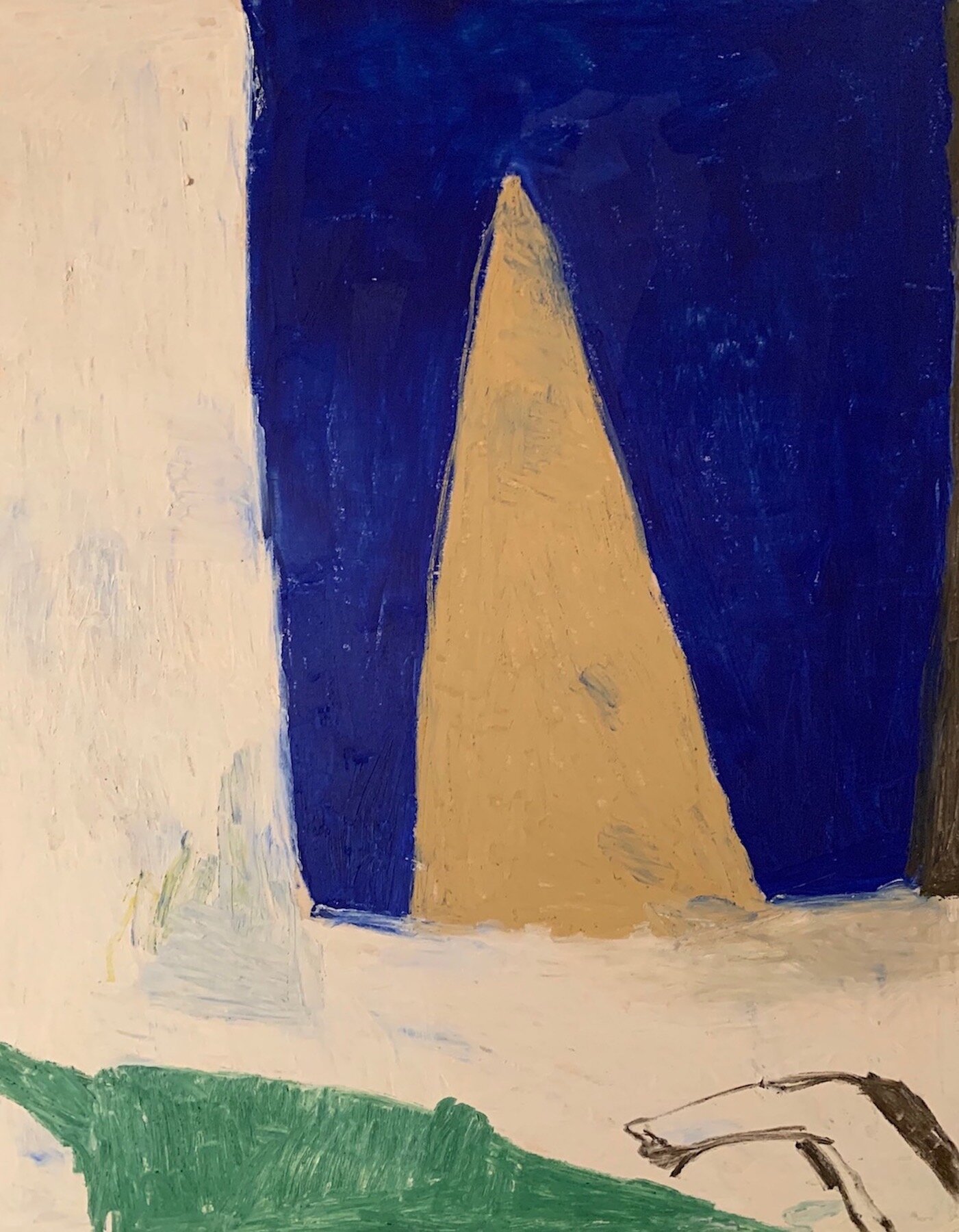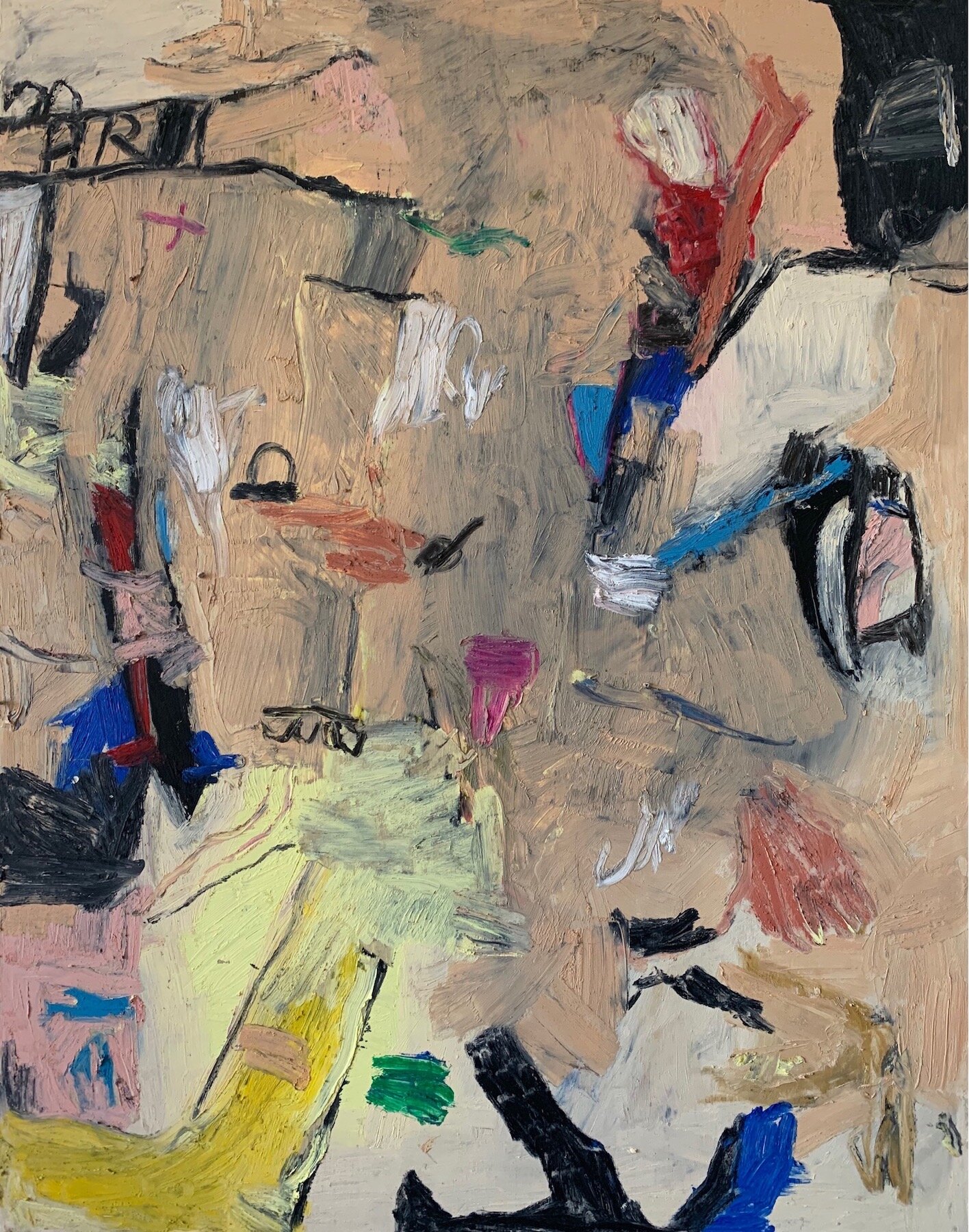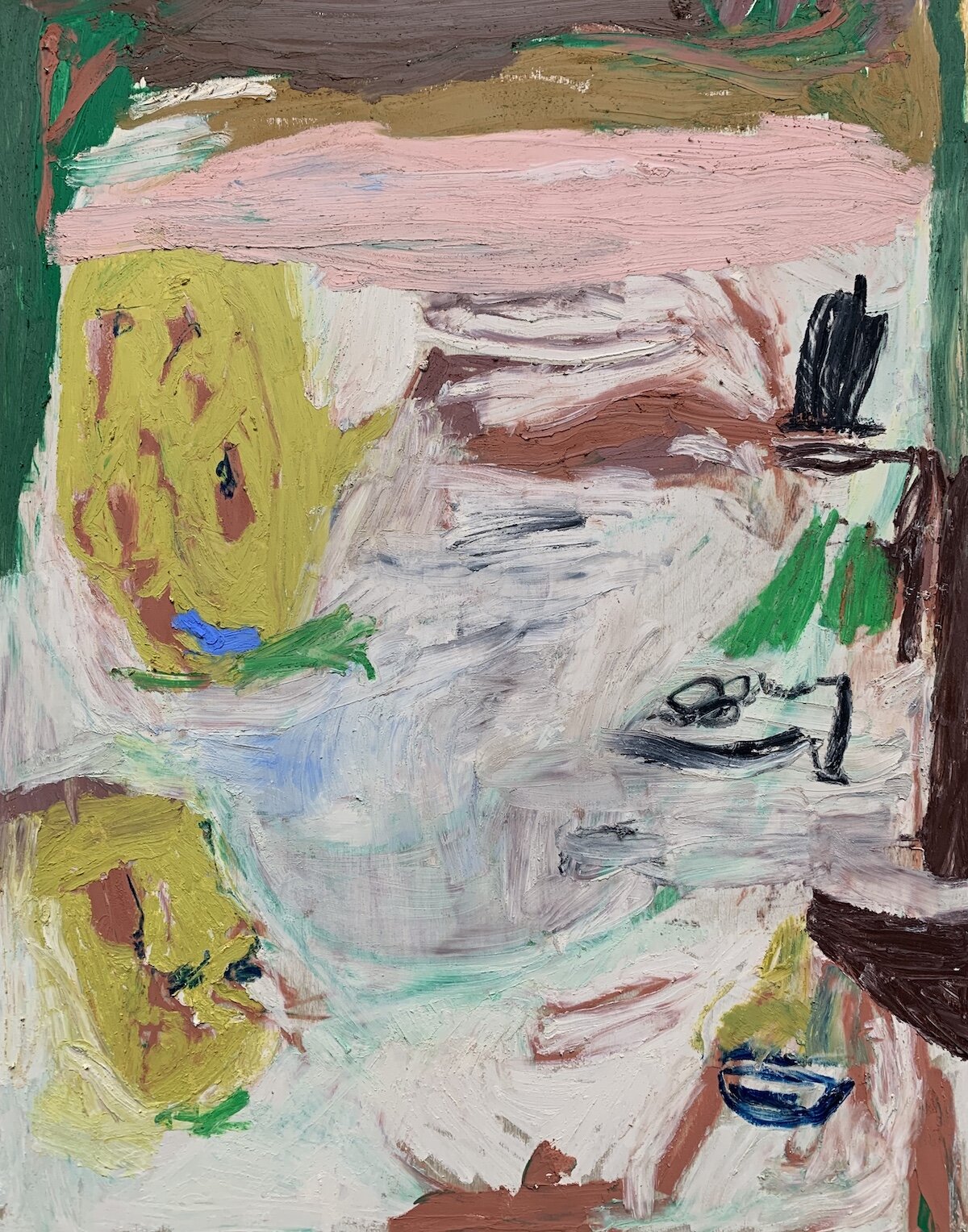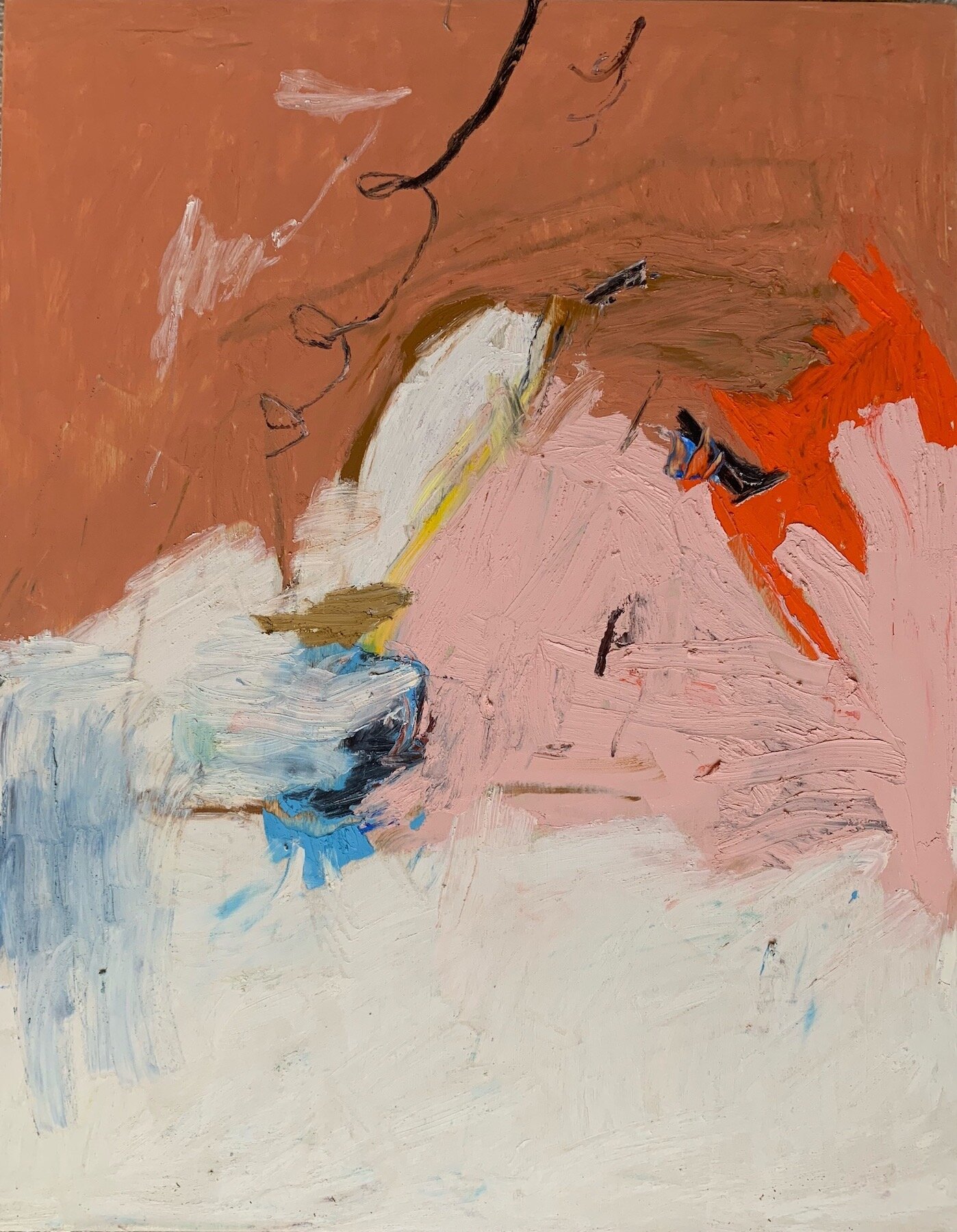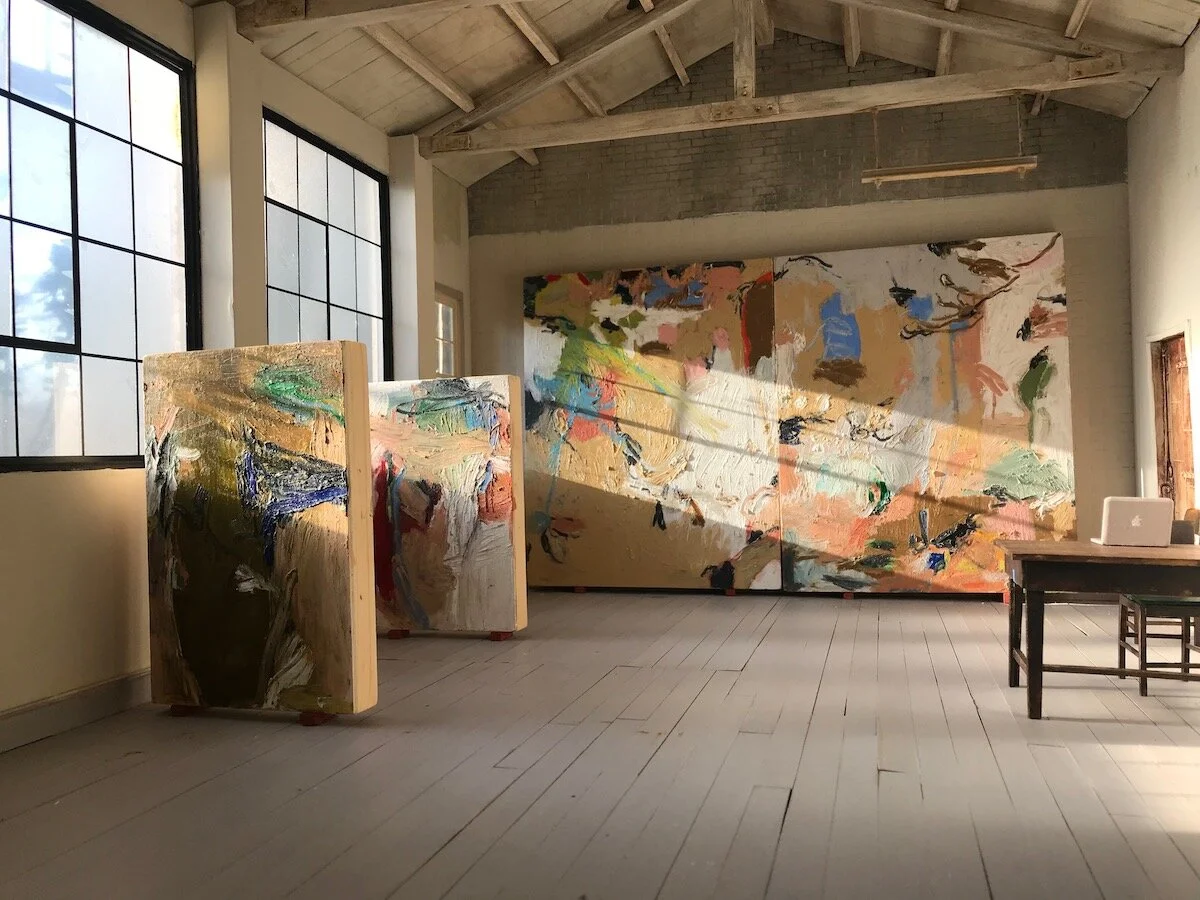Portrait of B Chehayeb.
B Chehayeb
B Chehayeb is an artist in Brooklyn and a current MFA candidate at the Massachusetts College of Art and Design. She holds a BFA in painting from the University of North Texas with a minor concentration in Creative Writing. Her work spans a wide range of media and focuses on the reconstruction of failed memories, specifically memories warped by nostalgia and cultural hybridity. In 2020 Chehayeb will attend as Artist in Residence at the Massachusetts Museum of Contemporary Art with the Massachusetts College of Art and Design Fellowship Award. She has exhibited both nationally and internationally.
Interview with B Chehayeb
Questions by Andreana Donahue.
Can you tell us a bit about your background and where you grew up? In what ways have your early visual experiences and personal history led to art-making?
I grew up in between a few small towns all over Texas, some in the north and some in the west. No matter where we landed, we always had a cluster of relatives nearby, so there were some consistent visual elements in the midst of cultural multiplicity and all played a big role in this diverse accumulation of iconography and references that stuck with me as I grew older: foods and branding, clothing and language. Some chicanx/mexican, cowboy and ranch culture, some white suburban American culture with this overpowering emphasis on sports. These elements swirled together creating something entirely independent of their respective roots. I think all this history has been waiting to surface in my work but it took some time and distance. Art school taught me how to paint and exposed me to its history but things like trauma, cultural resets, and parenthood led to becoming a more honest artist who was dependent on art making.
Where are you currently based and what initially attracted you to working in this community? Are there any aspects of this place that have surfaced in your work?
I moved to Brooklyn from Boston earlier this year. I visited with my family some time ago to see friends and really fell in love with the deep sense of community I felt at every corner. The cultural diversity in my neighborhood really mirrors the multiplicity in my life and work so I feel right at home. I know of many painters and writers here, some friends I went to school with are here. I sense NYC really values their creative communities and I’m grateful for the resources and opportunities available. There are definitely some moments during the move that I reference in paintings, also some writings. Also because my studio is so small I started experimenting with paper and that’s been humbling to say the least. There are people that make really good work on paper, not sure if it’s me, idk.
B Chehayeb’s studio in Gowanus, Brooklyn, 2020.
Can you tell us about your studio and what a typical day is like for you? Do you share space or ideas with other artists while working, or is it a more solitary routine?
I grabbed a small studio in Gowanus the day I moved. It was the first available, most affordable, and the closest to my home. There’s a quiet group of artists that work there, some designers I can hear through the walls taking calls and opening snacks. I appreciate every square inch. I start the day off with a 20 minute walk through the early morning rush. Watching others get to work and start their day is very inspiring to me. I love seeing the same strangers everyday and walking with them in a sense. I get hyped hearing songs I know from other people’s car speakers. You ever heard High Fashion by Roddy Rich shake an entire neighborhood at 9am?? It’s a gift! I take everything I see and hear and smell and feel in that morning and take it with me to that tiny studio. It’s not uncommon to go in with an idea for a memory painting about shoes and leave with paintings about dying young. Jenny Holzer said ‘All things are delicately interconnected’ and I believe her. And though I’m really extroverted and energized by others, I work best in solitude most days. I get to the studio with coffee. I’ll review the work from the day before and then paint and write until the sun sets unless I’m on a different schedule.
What criteria do you follow for selecting materials? Do you prefer to maintain a narrow focus or work across diverse media? How do you navigate the limitations and possibilities that result from this path?
This really depends on so many factors. For a while, I was stuck at home without access to a studio and didn’t feel confident working with oils but really missed for them so I bought oil sticks and stuck with them for a few years. My environment might dictate my materials, my resources or budget might. If I am in a dry or blue period it helps to try a new combination of medium and surface. Some things work until they don’t or until I’m bored to death. I had a studio visit once where I very vulnerably showed some new acrylic paintings on canvas after only working with oil sticks. The visitor straight up told me they weren’t as good and for some reason this got me amped and I only worked on canvas for like 6 months straight, I don’t know what this means but it’s probably related to limitations and possibilities.
Hair in the Drain, 2020. Oil on panel, 14” x 11”.
Can you walk us through your overall process? How would you describe your approach to manipulating materials? What about decision-making and editing?
Lots of writing, writing down everything and valuing even the most simple or insignificant impulse when it comes to the act of painting. Lots of voice notes, collecting screenshots of texts from my mom and grandpa, especially ones discussing my childhood and my ancestors. My grandpa recently texted me that his father was a tightrope walker so that’s pretty cool. Collecting memes or tiktoks I relate to. My process is remembering that everything informs the work and everything is valuable. I enjoy experimenting with mark making by oscillating between various application tools: t-shirts, fingers, paint jar lids. My final decisions with a piece tend to be the ones that feel most uncertain. If I get to a point in the painting where it feels resolute and stops asking questions of me, it might stop asking questions of others and it’s important to get back to the place where it is.
Can you talk about some of the ongoing interests, imagery, and concepts that have informed your process and body of work over time? How do you anticipate your work progressing in the future?
The icons from the Mexican bingo game ‘loteria’ live in my head rent free since I was six. Everything makes me think of them, they are so magical to me and symbolic. I’m interested in language and the lack thereof, especially in the context of how it unites communities or leaves others out. I grew up with a steady stream of Spanglish but never fully learned Spanish so a lot of my memories and traumas revolve around language chasms. I’m interested in the presence of black and brown influencers and culture on social media apps like IG and TikTok. I watch some of these creators make content that is not only engaging and/or critical but also really funny, especially if I share experiences with them, which is often. I can’t explain how important and enriching it is to share your cultural quirks or relate to whole childhood memories with strangers.
I’m influenced by everything I read. Right now I am rereading the outsiders by S.E Hinton, re-reading Frank Ohara poems, always. Luis Alberto Urrea’s book ‘The Water Museum’ made a huge impact on me and I think about the stories in that book often. Always thinking about Joan Didion and excerpts from ‘Lincoln in the Bardo’ by George Saunders. In all of these readings are themes of loss and grief that, for me, are inseparable from the themes of nostalgia and childhood. Conceptually I am interested in what I cannot get back and how I got here. My identity is materialized by histories, tangible, intangible, subconsciousness and consciousness.
I have been building what I call ‘memory studies’ that primarily employ personal materials as paint and sculpture. I was excited to present this work for my thesis at the Massachusetts College of Art and Design this summer. You can find my presentation here, if you want to see what I am looking forward to: I hope to progress my work in this direction as well as painting.
Some of B Chehayeb’s work in her studio.
Do you pursue any collaborations, projects, or careers in addition to your studio practice? If so, are there connections between the two?
For sure, before Covid I was a grad teaching assistant in the Liberal Arts department at my school. I helped teach an intercultural lab that discussed the presence of marginalized voices and other various perspectives in the world of contemporary art and literature. I learned so much from the poets we studied particularly Chen Chen and Jose Olivarez, whose poems have directly influenced pieces I’m proud of and really attached to. I look forward to connecting with some of my favorite local artists once the time is right. I’d love a chance to push through collaborative work in the future, even though I have no idea what that looks like.
As a result of the pandemic, many artists have experienced limited access to their studios or loss of exhibitions, income, or other opportunities. Has your way of working (or not working) shifted significantly during this time? Are there unexpected insights or particular challenges you’ve experienced?
Before the pandemic, if I couldn’t get to the studio or was busy at home catching up on emails, I could just work on whatever I had at the house. I felt comfortable having some pieces at home since my children were gone to school during the day. Now since my partner and children are home, it’s more difficult to leave work lying around and most paintings have been moved from this domestic workspace and occupy the studio full time. This has changed my relationship to the work, honestly. It’s hard to put my finger on what exactly that is but I definitely feel more cautious and sometimes there are several mental obstacles to overcome before I can get over to the studio and work naturally. At first, this was a discouraging shift but once I decided that it was like anything else that should inform my practice, I loosened up.
During the shutdown, an amazing project by Eben Haines in Boston surfaced to help support artists show and sell work despite closures. He started a gallery in his living room and showcased some tiny paintings of mine (which made them look massive) and the installation really added significantly to the work. I’ve shared some photos here. Definitely check his gallery out if you can, it’s called Shelter In Place gallery.
B Chehayeb’s work at the Shelter in Place gallery in Boston, 2020.
In a time that seems to be marked by uncertainty, collective anxiety, and increasing social unrest, why do you think the perspectives and contributions of artists remain meaningful? Do you feel a natural relationship exists between your work (or the role artists play more broadly) and confronting established systems - of power, cultural institutions, or otherwise?
I know for me, it helps to see artists documenting the way they are coping and responding during this time. I feel connected and hopeful as opposed to isolated and angry. The despair is still there but so is unity and empathy. I watched (and participated with) many artists donate so much of their life's work to raise money for the families, bail outs, and more. Watching major artists hold their organizations accountable by requiring anti-racist programming and more diverse rosters is exciting but I hope it lasts and that this energy doesn’t result in even more tokenism and buzz words.
Existing as a culturally hyphenated female artist feels confrontational in itself somedays. I’ve shown work in academic spaces and institutions where viewers will share that some elements and references make them excluded. This is the work though. My works address bicultural memories and traumas that exist somewhere in between what is the memory and what is real, between what is American and Mexican and a million other identities I carry.
Can you share some of your recent influences? Are there specific works - from visual art, literature, film, or music - that are important to you?
Anything Frances Stark makes is important to me. Not necessarily recent but I follow her work pretty closely because her show at the MFA in Boston changed my life. Some specific songs that have shaped my work within the past year or so: White Ferrari by Frank Ocean, Death is Real by Mt Eerie, Chronograph 1 by Chad Van Gaalen, Garden Song by Phoebe Bridgers, Sunday by Earl Sweatshirt, Two Slow Dancers by Mitski, and Neon Moon by Brooks and Dunn. Really moved by the movie Adaptation recently, Shia Lebouf’s Honey Boy, and I rewatch the television show Mad Men over and over. I think I’m on the 10th or 11th time through. I could drop everything and watch Fresh Prince of Bel Air any time of the day.
Who are some contemporary artists you’re excited about? What are the best exhibitions you’ve seen in recent memory?
I’m pumped about Marcus Lee Singleton! I came across his work on Instagram through mutual friends. Ginny Casey, Michelle Rawlings, Matt Smoak, Miranda July, Hannah Beerman, too many to name. Nicolas Nicolini! I could go on.. I saw Farah al Qasimi at MIT, that was impactful. A little before that I was lucky enough to catch Vivian Suter at Gladstone. Any show I have seen at the Distillery Gallery during my time in Boston was good. Hard to believe it has been so long since in-person shows were happening. Can’t wait to go to more.
What are you working on in the studio right now? What’s coming up next for you?
I’m figuring out paper still, so lots of that until I move into a larger space in a month or so. Prepping for my solo show next spring with Galleri Urbane in Dallas. Lots of research and material experimentation. I’ll be in North Adams this December on Residency at Mass MoCA and I’m really looking forward to my time there. I almost ran into Jenny Holzer during my last visit, it was surreal to come so close. I was just awarded the New York City Microgrant with Redbull Arts which helps open up new possibilities. Also I was announced as a finalist for the Wells Contemporary Art Prize in the UK so I look forward to that exhibition later this year. A few projects with spaces coming up in 2021 that are under wraps but will roll out soon!
